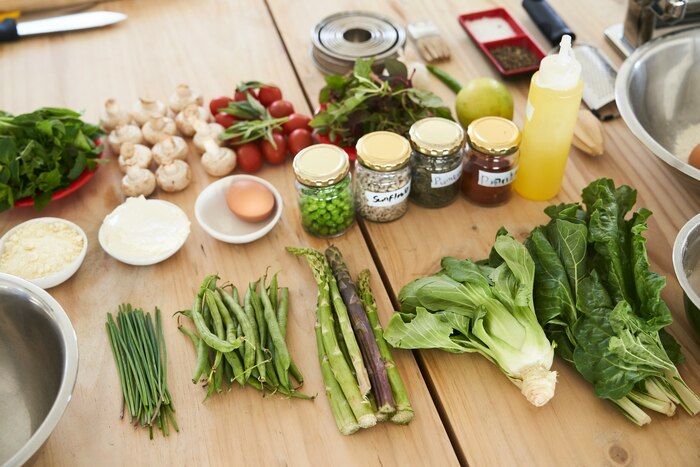
Introduction
Embark on a journey to cultivate your own garden oasis and relish the joy of fresh, homegrown produce. In this guide, we’ll explore the transformative journey “From Garden to Plate: How to Grow Your Own Fresh Produce,” unveiling the secrets to successful home gardening. Discover the immense satisfaction and numerous benefits that await those who nurture their own green spaces.
Getting Started
Overview of home gardening: Delve into the world of home gardening, a fulfilling pursuit that not only yields nutritious fruits and vegetables but also fosters a deeper connection with nature. Embrace the therapeutic aspects of tending to your garden and reap the rewards of your labor.
Importance of growing your own produce: Explore the myriad benefits of cultivating your own produce, from enhanced flavor and nutritional value to reduced environmental impact. Embrace self-sufficiency and take pride in the freshness and quality of your homegrown harvests.
Choosing Your Crops
Assessing climate and space: Understand the unique requirements of your local climate and assess the available space in your garden. Tailor your crop selection to thrive in your specific growing conditions, ensuring optimal success and productivity.
Determining which crops to grow: Explore a diverse array of crops suited to home gardening, from vibrant vegetables to luscious fruits. Consider factors such as personal preference, dietary needs, and culinary versatility when selecting your crops, ensuring a rich and varied harvest.
Planting
Understanding planting seasons: Master the art of timing by familiarizing yourself with the optimal planting seasons for different crops. Harness the power of seasonal cycles to maximize growth and yield, setting your garden up for success from the outset.
Proper spacing and depth: Follow precise guidelines for planting depth and spacing to promote healthy root development and efficient utilization of garden space. Adopt best practices for each crop type, ensuring ample room for growth and abundant yields.
Watering and Maintenance
Establishing a watering schedule: Strike the perfect balance between hydration and moderation by implementing a consistent watering schedule. Tailor your watering regimen to suit the needs of each crop, avoiding both drought stress and waterlogged soil.
Implementing pest control measures: Safeguard your precious crops against common pests and diseases with proactive pest control strategies. Explore organic and sustainable methods to minimize pest damage while preserving the health of your garden ecosystem.
Harvesting
Identifying signs of readiness: Hone your harvesting instincts by learning to recognize the telltale signs of ripeness and maturity in your crops. From vibrant colors to tender textures, observe the subtle cues that indicate optimal harvest timing.
Tips for harvesting different crops: Unlock the secrets to harvesting success with expert tips tailored to each crop variety. Whether you’re harvesting leafy greens, root vegetables, or vine-ripened fruits, employ proper techniques to preserve freshness and flavor.
Storage and Preservation
Best practices for storing fresh produce: Extend the longevity of your harvest by mastering the art of proper storage. Explore optimal storage conditions for different types of produce, from cool, dark spaces for root vegetables to refrigeration for delicate fruits and greens.
Techniques for preservation: Embrace the abundance of the harvest season by exploring various preservation methods. From canning and pickling to freezing and drying, preserve the flavors of summer to enjoy year-round.
Troubleshooting
Common issues in home gardening: Navigate potential challenges with confidence by familiarizing yourself with common gardening issues. From nutrient deficiencies to pest infestations, identify the underlying causes of garden woes and implement effective solutions.
Solutions and prevention methods: Arm yourself with a toolkit of practical solutions and preventative measures to address and mitigate garden problems. Embrace proactive strategies to maintain garden health and vitality, ensuring a thriving harvest season after season.
Sustainability Practices
Implementing eco-friendly gardening techniques: Cultivate a greener garden by incorporating sustainable practices into your gardening routine. Explore eco-friendly alternatives to traditional gardening methods, from water-wise irrigation to natural pest control.
Composting and reducing waste: Harness the power of composting to recycle organic matter and enrich your garden soil. Transform kitchen scraps and yard waste into nutrient-rich compost, closing the loop and minimizing waste in your gardening endeavors.
Sharing Your Harvest
Community involvement and sharing surplus produce: Foster connections within your community by sharing the bounty of your garden with neighbors, friends, and local organizations. Embrace the spirit of generosity and abundance by spreading the joy of fresh, homegrown produce.
Tips for preserving excess yield: Discover creative ways to preserve and share surplus harvests, from homemade jams and preserves to fresh produce exchanges. Minimize food waste and maximize enjoyment by finding innovative uses for excess yield.
FAQs
- How much sunlight do most vegetables need?
- What are some common pests to watch out for in the garden?
- Can I grow vegetables indoors?
- What should I do with leftover produce at the end of the season?
- How can I improve soil quality in my garden?
- Are there any crops that are particularly easy for beginners to grow?
Conclusion
Embark on your journey “From Garden to Plate: How to Grow Your Own Fresh Produce” armed with knowledge, enthusiasm, and a green thumb. Cultivate a thriving garden oasis, savor the flavors of homegrown goodness, and share the abundance with those around you. With dedication and care, your garden will flourish, enriching your life and nourishing your soul.



